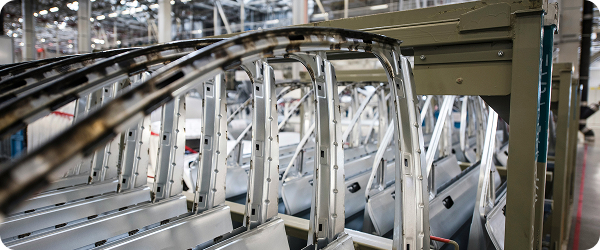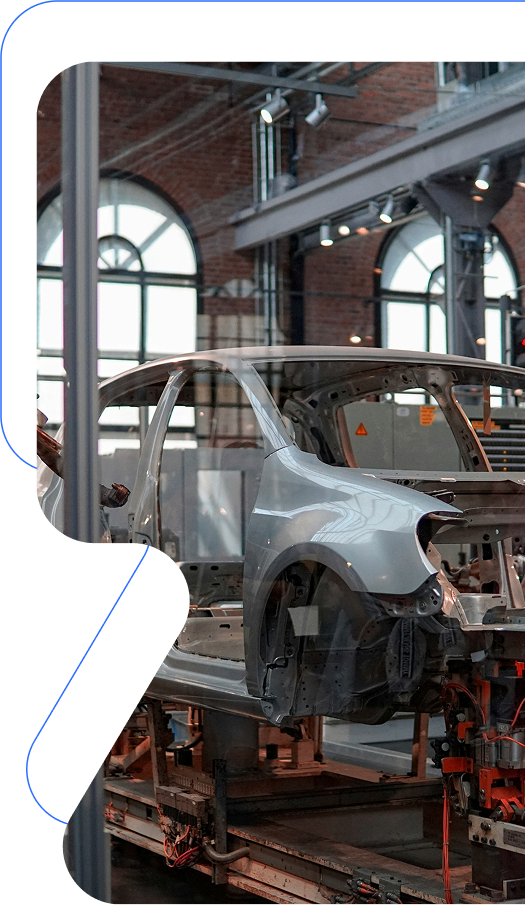Research Collaboration
Metalsa will work together with universities or research institutes; within the framework of financing for undergraduate thesis, contract research, proposals for external funding or providing access to industry equipment.

Metalsa, a global leader in manufacturing automotive components specializing in chassis structures for light and commercial vehicles, is seeking innovative corrosion protection solutions.
We aim to develop a passive cathodic protection method for the automotive industry that utilizes replaceable sacrificial anodes. This approach would complement existing protection methods, such as galvanized steel and e-coat protection, by providing an additional layer of defense against corrosion.
Proposals should focus on designing a practical and efficient sacrificial anode system tailored for automotive applications.
Corrosion is a major concern in the automotive industry, affecting safety and aesthetics. Passive cathodic corrosion, common in marine vessels and pipelines, uses sacrificial anodes that corrode instead of structural metal. These replaceable anodes can extend corrosion protection for vehicles to over 15 years.

Currently, corrosion protection on frames is implemented with the use of galvanized steel and e-coat. Both methods involve the addition of a protective layer, e-coat prevents corrosion by serving as insulation between the substrate and the electrolyte. On the other hand, in galvanized steel the zinc layer acts as sacrificial anode, effectively establishing a cathodic protection system, like sacrificial anodes in ships, but with the disadvantage that once the zinc layer oxidizes, it cannot be replaced by a new one.
There are no discarded solutions since the project is still in the exploratory stage.

Submit your proposal for an opportunity of working together with Metalsa
Metalsa will work together with universities or research institutes; within the framework of financing for undergraduate thesis, contract research, proposals for external funding or providing access to industry equipment.
Metalsa and participant can work together to share technologies, develop or enhance their products, combine or integrate their technologies, or jointly commercialize a new product.
A business arrangement in which the participant shall give Metalsa permission to manufacture its product for a specific royalty fee with exclusivity.
Metalsa is open to exploring a variety of partnership models, tailored to the development stage of the proposed technology. If the project results in new intellectual property (IP), joint-patent applications will be considered, along with Metalsa's support for IP generation.

Your journey starts here
Deadline for submission
Evaluation of proposals / Request of additional information
Candidates selection / Starting discussions with selected candidates
All partners within the open innovation community, start ups, research centers, universities, individual research and development leaders, and companies of all sizes are invited to submit proposals.
You can submit your proposal through the Open Innovation Challenge website, clicking on “Submit proposal” button and follow the steps to have your proposal submitted to Metalsa. Or you can just submit the proposal through this link.
Participants can submit more than one proposal.
Participants can submit more than one proposal.
Yes, both teams and individuals can participate. They will be evaluated in the same way, since what is important for us is the idea/proposal.
Once your proposal is submitted, no further edits will be possible. Therefore, please review and revise it thoroughly before submission. We recommend drafting your proposal first and returning to finalize it later if needed. Be sure to save your draft to avoid losing any changes.
You can check the status of your submission through your Innoget.com account using this link. Please note that Metalsa will be evaluating proposals throughout the months of May and June and may reach out to select submitters if additional information is needed.
In June 2025, candidate selection and discussions with innovators will begin.
Metalsa will be evaluating the proposals throughout the months of May and June and may reach out to select submitters if additional information is needed.
In June 2025, candidate selection and discussions with innovators will begin.
The proposed solution can be at any Technology Readiness Level (TRL) beyond TRL 4 . This means solutions at different stages of development are acceptable, including:
TRL 4: Validation in laboratory conditions
TRL 5: Validation in a relevant environment
TRL 6: Demonstration in a relevant environment
TRL 7: Regulatory approval
We recommend including the following NON - CONFIDENTIAL information in your proposal
Submit your comments or general inquiries regarding these challenges. We appreciate the opportunity to be of assistance.
